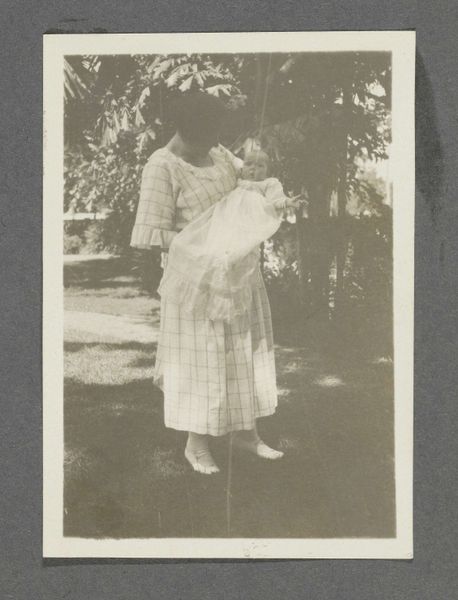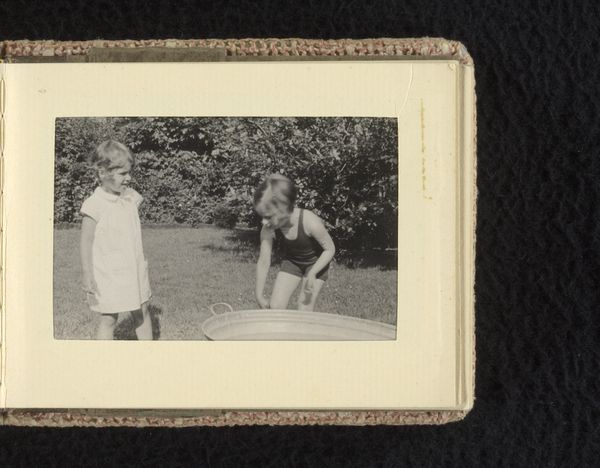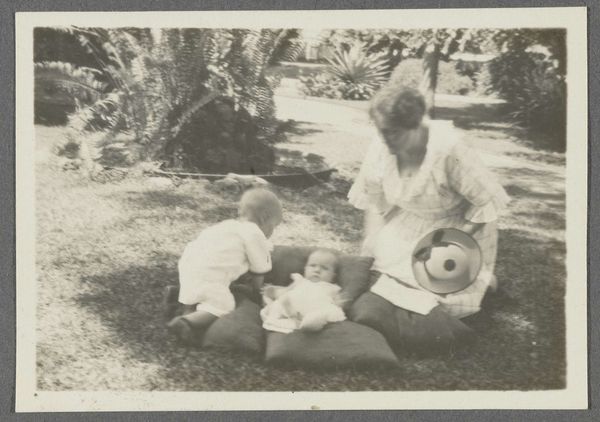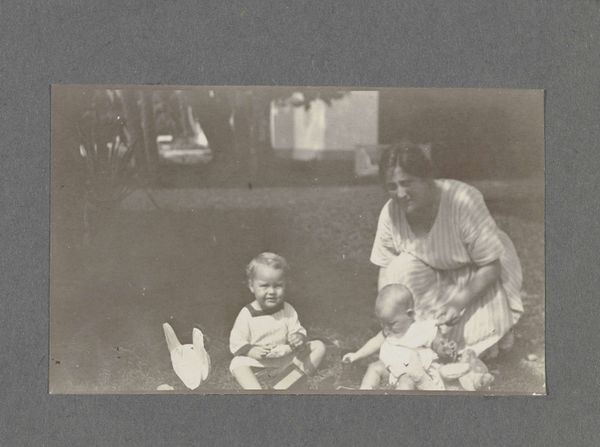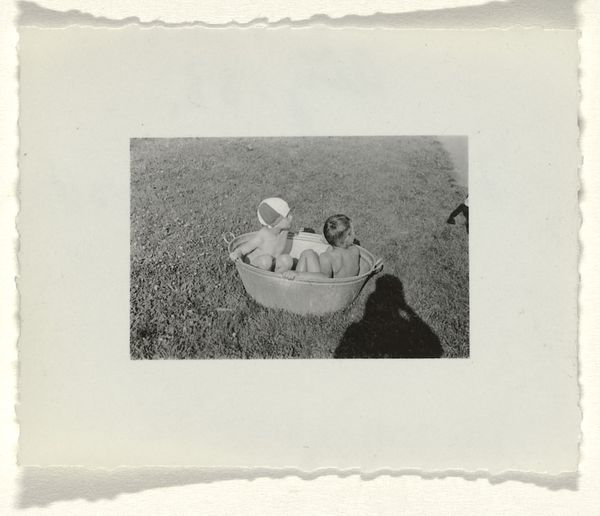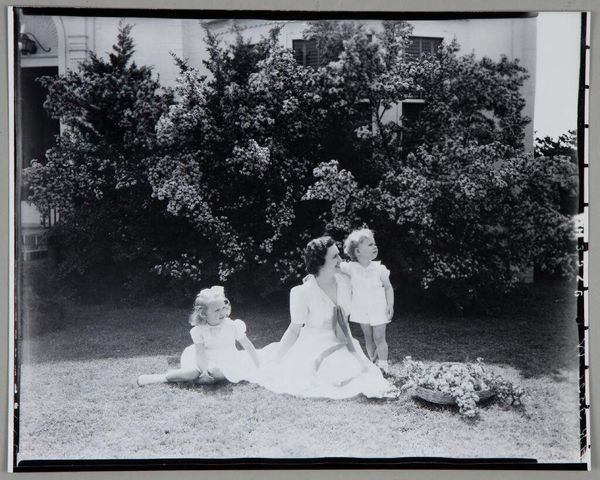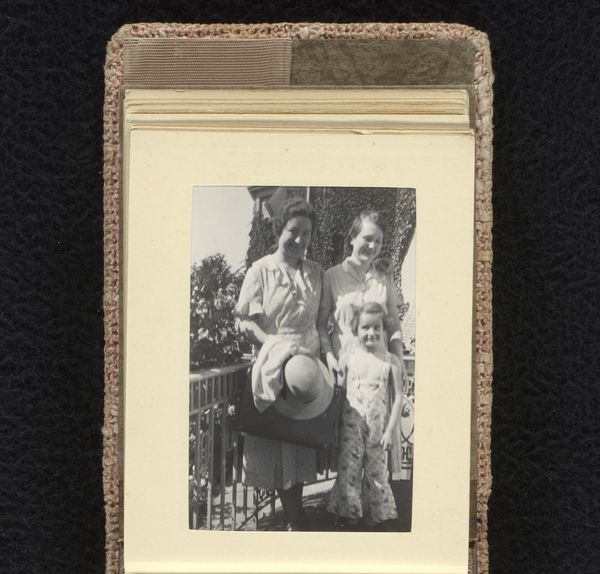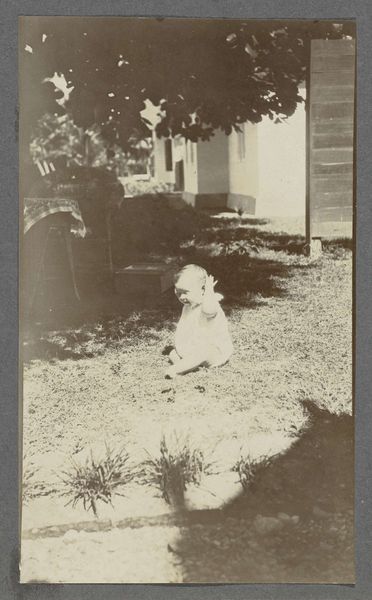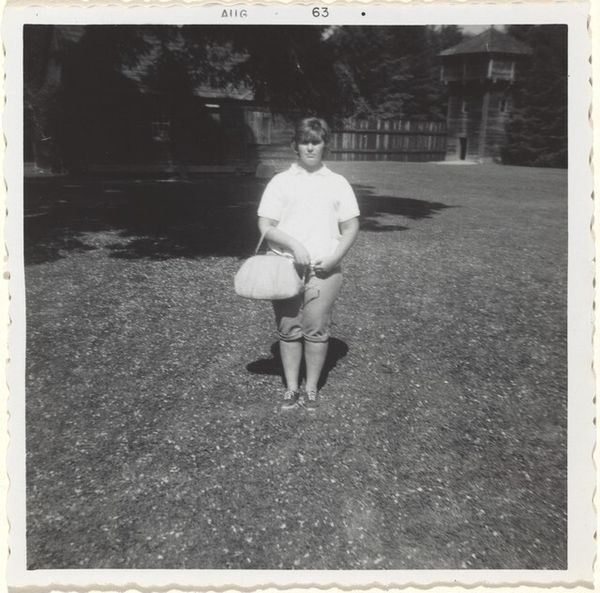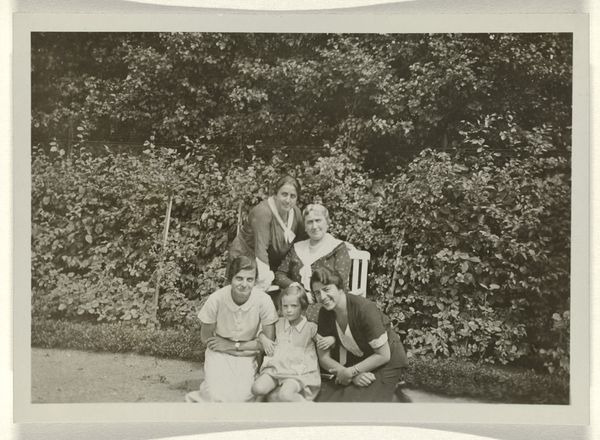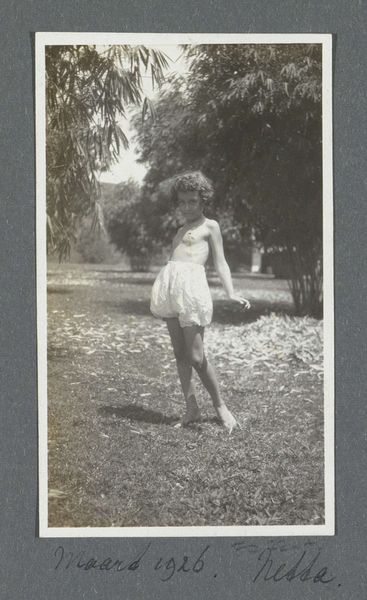
photography, gelatin-silver-print
#
portrait
#
garden
#
landscape
#
photography
#
child
#
gelatin-silver-print
#
sketchbook drawing
#
genre-painting
Dimensions: height 110 mm, width 65 mm
Copyright: Rijks Museum: Open Domain
Editor: This gelatin-silver print from 1925, titled "Klaas en Tiny Kleiterp spelend in een tuin te Adiwerna op Java," captures a moment of childhood. The texture of the grass is almost palpable. How would you interpret this photograph? Curator: What strikes me is not just the children and their play, but the materiality of this image itself. A gelatin-silver print is more than just a way to capture light; it is a process tied to specific historical conditions, to the availability of materials and labor practices. Who took the picture, and for what purpose? What were the material constraints of photography in Java at that time? These details root it in specific conditions of labor and technology. Editor: That's a perspective I hadn't considered. I was focused on the children themselves, the idea of play transcending cultural boundaries. Curator: Play is important, but it’s also constructed. Consider what this scene omits: Who maintains the garden? Who provided the children's clothing, their toys? This photograph speaks volumes about leisure and privilege during the colonial era, but also about what is intentionally framed in the photograph as "art," when, simultaneously, the means to get this "art" are invisibilized. What's reflected in their leisure says much about the labour needed to manufacture that leisure. Editor: So you're saying that understanding the historical means of production of this image gives us insight into the social structures it depicts? Curator: Precisely. By understanding the historical context of the work’s physical production, and by looking at photographic *production* rather than aesthetic representation, the image reveals a more complex narrative of power, labor, and material consumption. The photo’s subject—its referent—can be more acutely understood by studying how it’s rendered as an *object.* Editor: I’ve definitely learned to look beyond the surface and consider the conditions that allowed this image to exist in the first place. Thanks!
Comments
No comments
Be the first to comment and join the conversation on the ultimate creative platform.
